#Founding Fathers by Dale Faulstich
Explore tagged Tumblr posts
Text
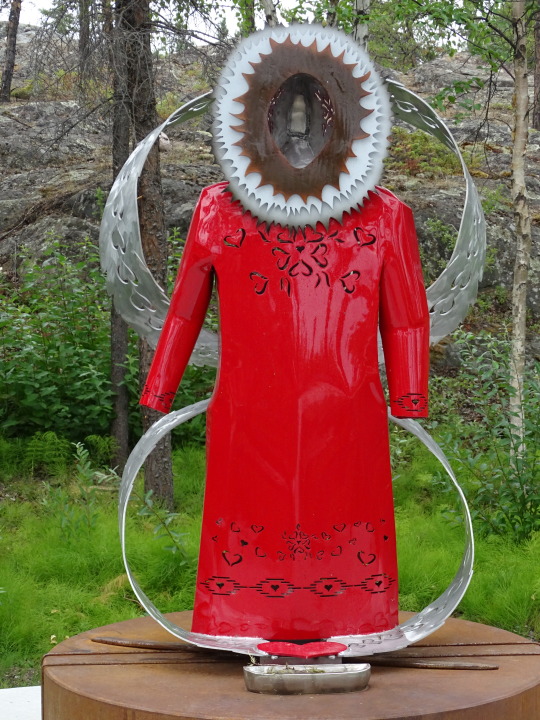
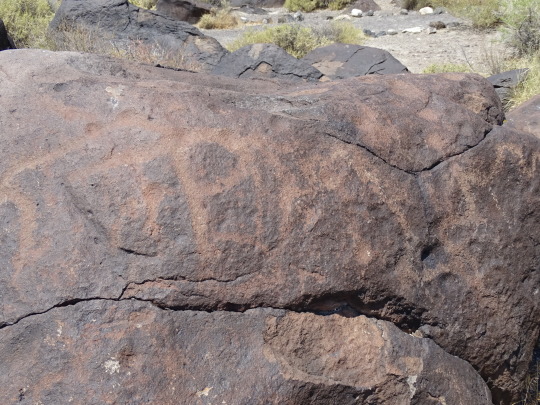

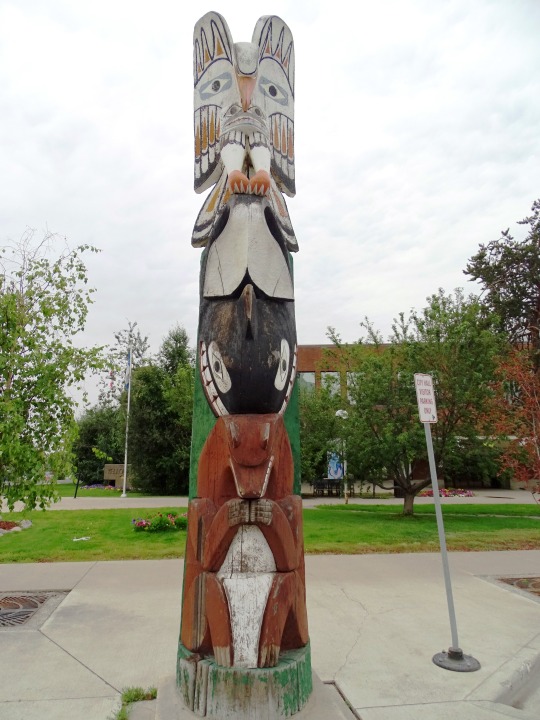

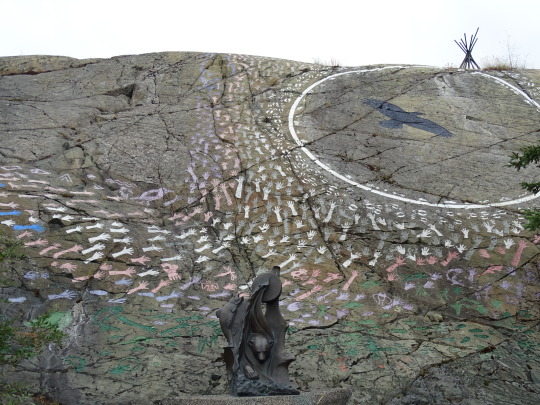
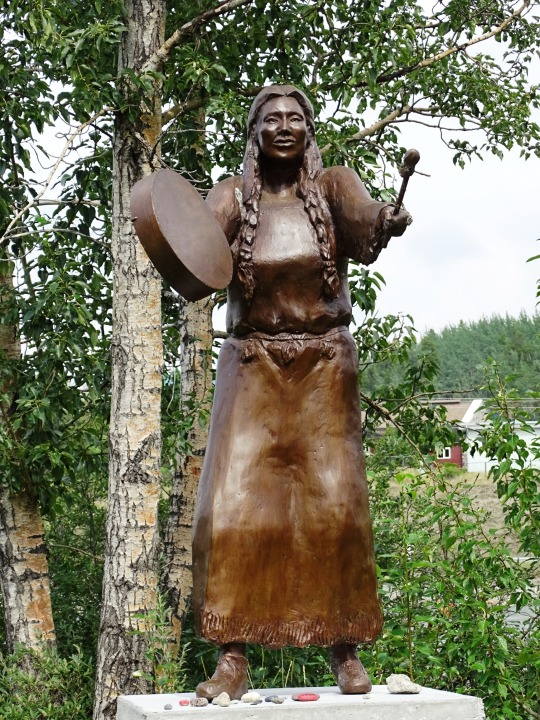

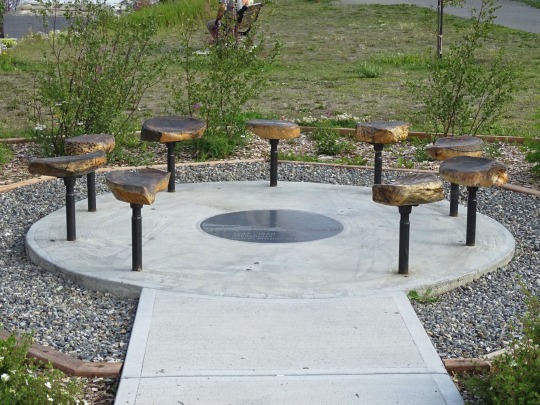
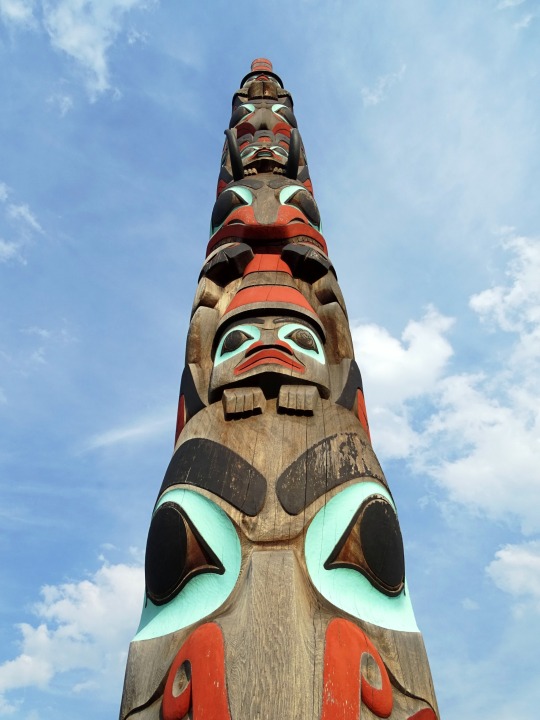
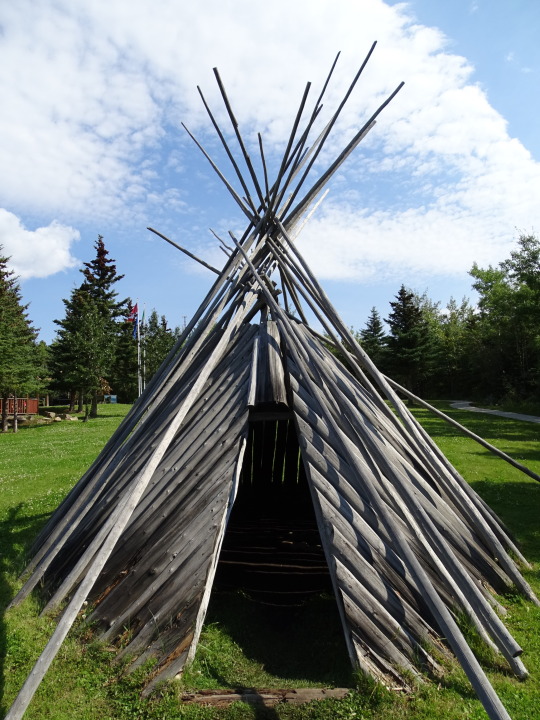
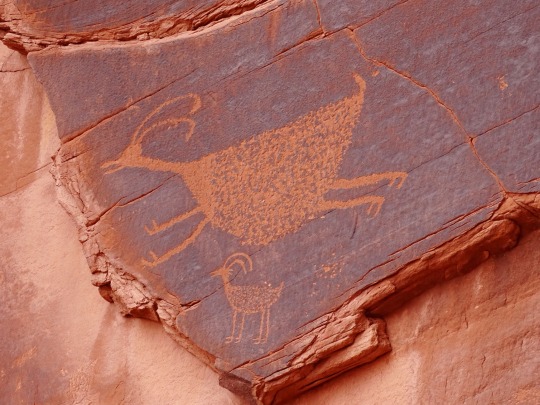

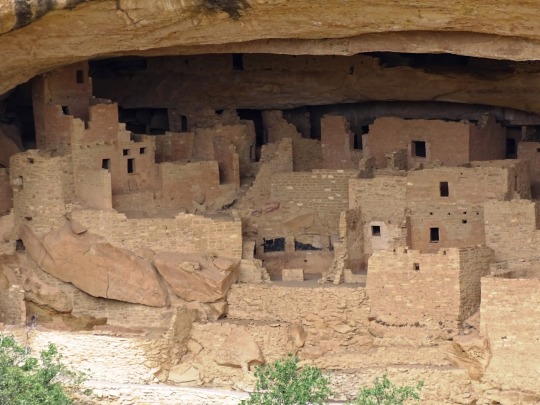
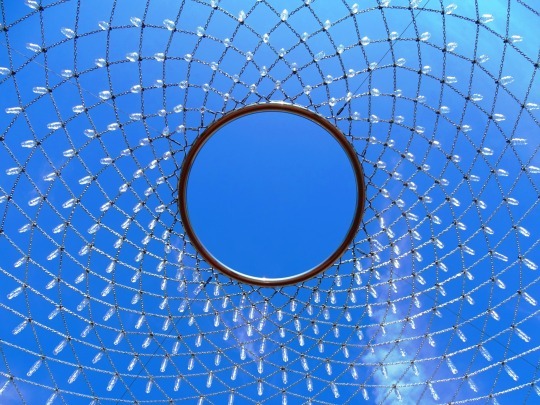

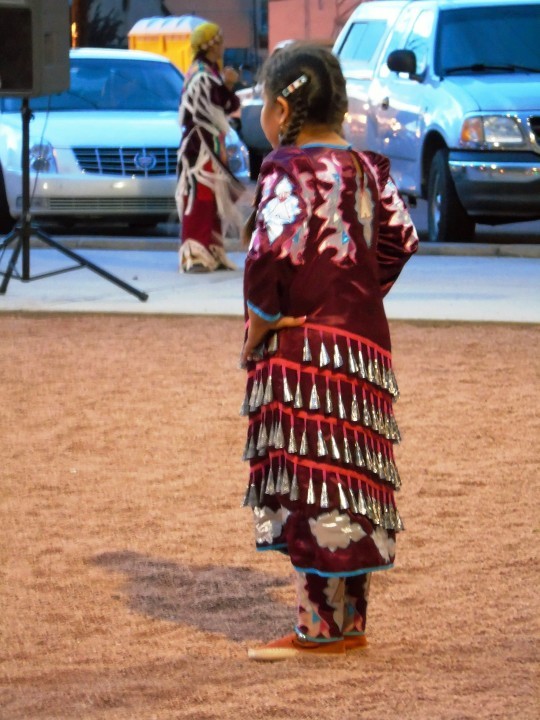
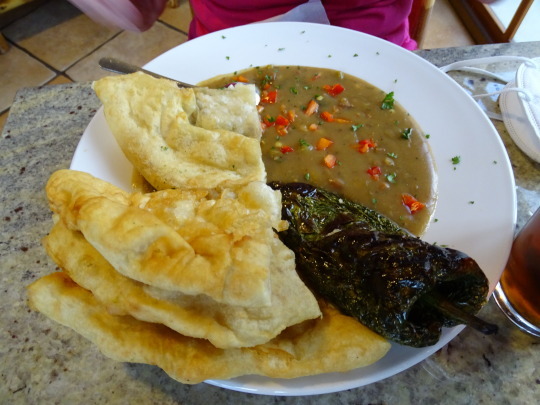


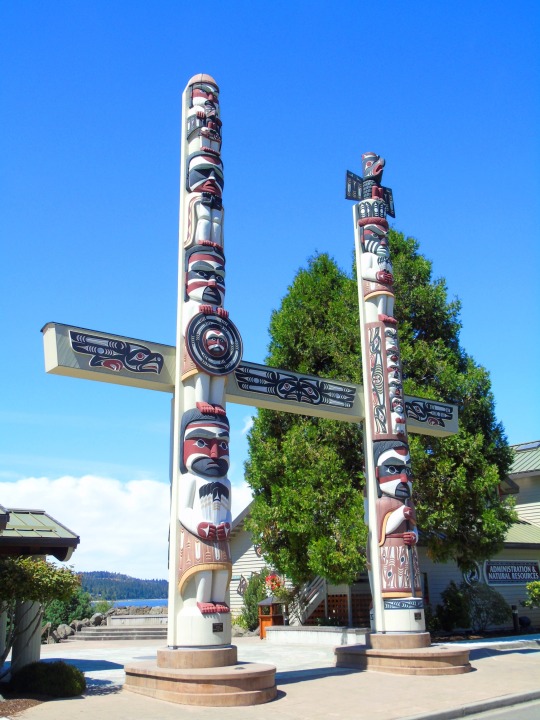
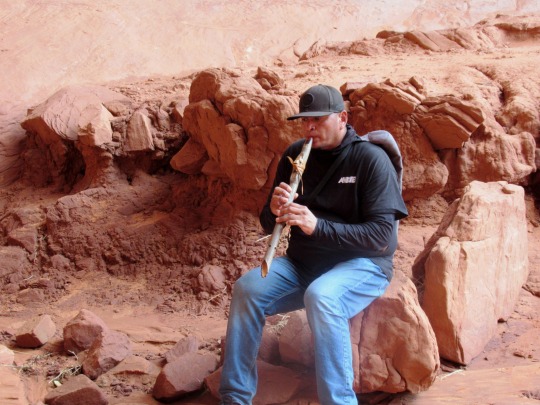

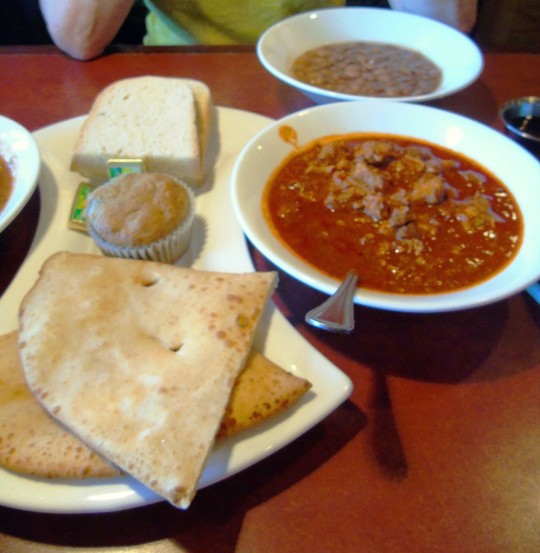

National Day of Mourning
The National Day of Mourning takes place on the fourth Thursday of November, this year it’s on November 28. If this date sounds familiar to you, it’s because the fourth Thursday of November also coincides with Thanksgiving in the U.S. Every year on the National Day of Mourning, Native American people in New England gather together to protest. To them, Thanksgiving serves as a reminder of the unjust treatment that Native Americans have received since the 1620 Plymouth landing.
History of National Day of Mourning
The National Day of Mourning reminds us all that Thanksgiving is only part of the story. Native Americans, since 1970, have gathered at noon on Cole’s Hill in Plymouth, Massachusetts, to commemorate a National Day of Mourning on Thanksgiving Day.
Pilgrims landed in Plymouth and established the first colony in 1620. As such, it’s the oldest municipality in New England. Many Native Americans, however, don’t celebrate the arrival of the Pilgrims and other European settlers. Thanksgiving, to them, is a brutal reminder of “the genocide of millions of Native people, the theft of Native lands, and the relentless assault on Native culture.”
They participate as a way to honor Native ancestors and the struggles of Native peoples to survive today. “It is a day of remembrance and spiritual connection as well as a protest of the racism and oppression which Native Americans continue to experience.”
The United American Indians of New England (UAINE) sponsors this event. They maintain that the Pilgrims arrived in North America and claimed tribal land for their own, as opposed to establishing a mutually beneficial relationship with the local inhabitants. UAINE members believe that these settlers “introduced sexism, racism, anti-homosexual bigotry, jails, and the class system.”
The National Day of Mourning generally begins at noon and includes a march through the historic district of Plymouth. While the UAINE encourages people of all backgrounds to attend the protests, only Native speakers are invited to give these speeches about the past, as well as current obstacles their people have overcome. Guests are asked to bring non-alcoholic beverages, desserts, fresh fruits and vegetables, or pre-cooked items. The protest is open to anyone, and has attracted other minority activists.
National Day of Mourning timeline
1998
No permit needed
UAINE receives permission from local authorities to march in protest without having to obtain a permit.
1997
Protests got violent
State troopers use force against protesters who gathered together to observe the 28th annual National Day of Mourning.
1970
National Day of Mourning began
The first annual protest for the National Day of Mourning takes place.
1620
Pilgrims arrived
English separatist Puritans, who had broken away from the Church of England, land at Plymouth Rock. Today we refer to them as Pilgrims.
National Day of Mourning FAQs
What really happened in 1621?
The Pilgrims celebrated their first successful harvest by firing guns and cannons in Plymouth. The noise alarmed ancestors of the Wampanoag Nation who went to investigate. That is how native people came to be present at the first Thanksgiving
Are federal offices closed on a national day of mourning?
U.S. government offices are closed on the National Day of Mourning due to the Thanksgiving holiday.
What happens on the National Day of Mourning?
Native Americans and supporters gather in Plymouth to “mourn our ancestors and the genocide of our peoples and the theft of our lands.”
How to Observe National Day of Mourning
Brush up on your history: Do you know much about the first Thanksgiving? Do some research online, stop by your local library, or watch a documentary that will help give you a better understanding of what Native Americans actually went through.
Learn more about the United American Indians of New England (UAINE): UAINE is responsible for helping the National Day of Mourning protest take shape. To observe this important day, take some time to learn about about the UAINE. It's a fascinating organization that has done a great deal to promote better treatment for the Native American people.
Attend a protest: Protesters gather on Cole's Hill, a location overlooking Plymouth Rock, in Massachusetts. Everyone is welcome to observe these gatherings, and recently, other minority groups have started to become involved in the events of this day.
4 Reasons To Thank Native Americans
They've been here a while: Native Americans have existed in what is now known as the United States since 12,000 BC.
Thank you for your service: Although they were not considered American citizens, over 8,000 Native Americans served in the military in World War I.
Your great-grandma is who?: Many of the first families who settled in Virginia trace their roots directly back to Pocahontas.
An important vocabulary lesson: A bunch of Native American words have made their way into the English language; for example, coyote, tomato, poncho, potato, and chia.
Why National Day of Mourning is Important
It serves as an important history lesson: Textbooks often glaze over the unjust treatment of Native Americans. The National Day of Mourning, however, is a reminder that the people native to the Americas have been the recipients of a great deal of unfair treatment. It's important to discuss.
It's a time to come together: For protesters, the National Day of Mourning serves as a time to rally together to advocate for what they believe in. UAINE has worked to improve relations between the government and native people.
It shifts our attention away from turkey: Yes, Thanksgiving can be a great day filled with tons of good food and time spent with loving family and friends. However, the mission behind the National Day of Mourning is to highlight that the Thanksgiving holiday is actually quite painful for some people. For quite a few Native Americans in New England, Thanksgiving marks a time when their ancestors were treated poorly.
Source
#MMIWG monument by Myrna Pokiak#Yellowknife#White Bird Battlefield Historical Landmark#The Gather-Ring by Manuel Báez and Charlynne Lafontaine#National Day of Mourning#28 November 20243#NationalDayofMourning#native american#Wabanki Canoe#Founding Fathers by Dale Faulstich#Jamestown S'Klallam Tribe#fourth Thursday in November#Unthanksgiving Day#travel#original photography#vacation#tourist attraction#Canada#USA#First Nations#Labyrinth Park#Monument Valley Navajo Tribal Park#Dinosaur National Monument#Mesa Verde National Park#Finding Peace Monument by Halain De Repentigny#Survivors of Whitehorse Indian Mission School by Ken Anderson#Two Brothers Totem Pole by Jaalen and Gwaai Edenshaw#Jasper National Park
4 notes
·
View notes
Photo

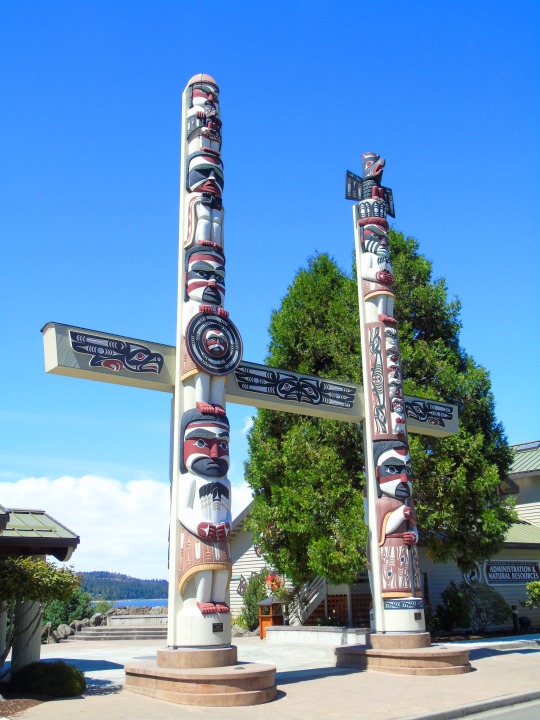


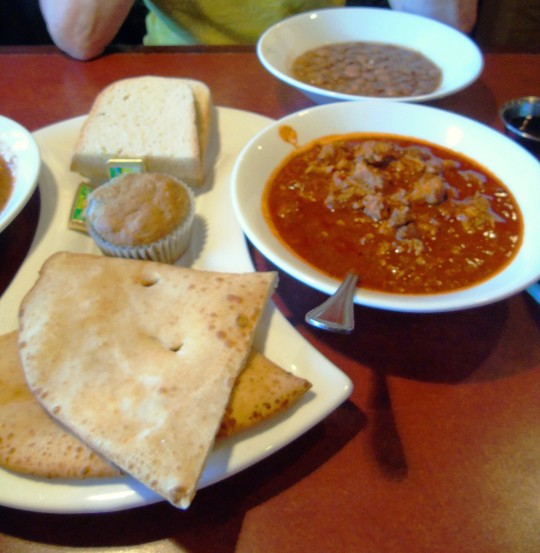


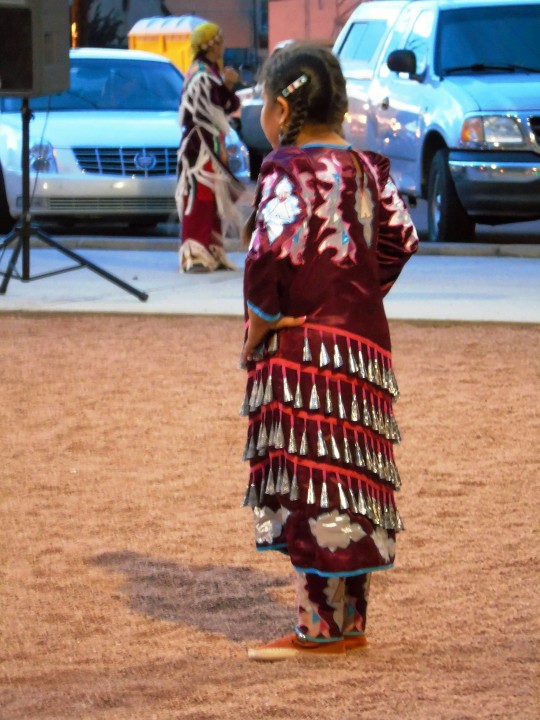
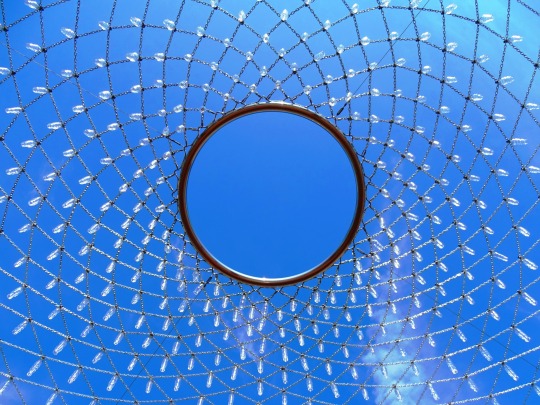

International Day of The World's Indigenous People
The International Day of the World’s Indigenous People on August 9 pays tribute to the indigenous communities of the world. The latest data reveals that there are about 370 to 500 million indigenous people living in 90 countries. These communities are noted to have their own unique set of languages, traditions, cultures, and governing systems. For many indigenous groups, the systems that their ancestors have followed for centuries have stood the test of time by serving them with positive outcomes to date. Many indigenous people’s special bond and connection with nature have also led to the protection of the general environment. However, on the other side, several indigenous communities face difficulties due to a central government’s covert and overt attempts to control their lives. This has led to indigenous people’s rights violations where they would have otherwise ensured peaceful and harmonious lives for them.
History of International Day of The World's Indigenous People
The first International Day of the World’s Indigenous People was officially celebrated in August 1995. The day had been brought into existence when the 49/214 resolution was passed by the U.N. General Assembly on December 23, 1994. August 9 was chosen as the commemorative date because that was when the first meeting of the U.N. Working Group on Indigenous Populations of the Sub-Commission on the Promotion and Protection of Human Rights was held. Every year, the day is honored by governments and organizations holding education forums and conferences to meet and discuss the social issues faced by indigenous groups worldwide. People are also given information on any ongoing and/or upcoming activities and projects that are being undertaken to help the target communities. Every year, the theme changes to shed light on a pressing topic, and the theme for the year 2021 was ‘Leaving no one behind: Indigenous peoples and the call for a new social contract.’
The social contract theme is a call for accountability in the general populations’ interaction with the indigenous communities and their resources. Over the years, many indigenous groups have found themselves to be on a disadvantageous terrain in the face of urban development projects that have destroyed and denigrated their lands and territories. The central governments and builders involved in such projects never sought permission from or even spoke with the indigenous communities before they took the developmental steps. Organizations and agencies like the U.N. and UNESCO have made efforts for constitutional/legislative reforms for dominant indigenous groups. Yet, the efforts must be focussed on bringing everyone together in the cause, leaving none behind.
International Day of The World's Indigenous People timeline
1982 First U.N. Meeting on Indigenous People
The U.N. holds the first meeting on indigenous people by forming the U.N. Working Group on Indigenous Populations of the Sub-Commission on the Promotion and Protection of Human Rights.
1995 International Day of the World’s Indigenous People
The first International Day of the World’s Indigenous People is celebrated by the U.N. General Assembly.
2005 - 2015 Indigenous People’s Decade
The U.N. proclaims 2005 to 2015 to be the ‘Decade of Action and Dignity’ for the indigenous communities.
2019 Indigenous Languages Year
After a startling 2016 report on the danger of more than 2,000 indigenous becoming extinct, the U.N. declares 2019 to be the International Year of Indigenous Languages in order to create awareness.
How To Observe International Day of the World’s Indigenous People
Learn about indigenous groups
Learn an indigenous language
Stand by indigenous groups
History related to indigenous people is always interesting to read and learn about. They have their own sets of beliefs, customs, languages, and cultures. Their daily lifestyles are also often connected with nature, be it animals, trees, certain plants, or lakes/rivers.
The U.N. declared the years 2022 to 2032 the decade for indigenous languages. The goal is to bring to attention the dying languages, since most of them are not taught in schools or are used by the general public. Losing a language is losing an important facet of the history and culture of a people.
The best way to celebrate this day and the rest of the year is by vowing to stand by indigenous groups. The indigenous people have the right to freely choose however they wish to live, much like any other living being on this planet. Protecting their rights also in turn protects your rights in the long run.
5 Interesting Facts About Indigenous People
80% of the world’s biodiversity
4,000 indigenous languages
High poverty rates
Short life spans
Leaders in protecting the environment
Around 80% of the world’s biodiversity is in places where indigenous groups are living.
The 5,000 indigenous communities in the world are credited with having about 4,000 languages.
While the indigenous communities account for only 5% of the world’s population, they make up 15% of the world population that is living in poverty.
Indigenous communities, due to a lack of awareness, have shorter life spans as they die of preventable diseases like malaria and H.I.V.
Studies have shown that the fauna and flora, and biodiversity thrive and flourish where indigenous people reside.
Why International Day of the World’s Indigenous People is Important
It’s a celebration of indigenous people
It’s a celebration of indigenous languages
It’s a celebration of the freedom to live
Indigenous people form an essential and crucial part of not only our planet’s history, but also how human beings have come to make systems to lead fruitful lives. The indigenous people’s cultures, customs, and traditions are interesting to learn about for their uniqueness and for what they teach us about the universe and the bigger picture.
Language, at its core, builds the identity of a people. The involvement of the different phonetics, grammar rules, and formal/informal styles can tell one a lot about where a community has come from, and how their history has shaped them. The same is the case with indigenous languages. The problem lies in their endangerment, and this is why we must strive to preserve them.
The freedom to practice our rights on a piece of land that has shaped our communities for centuries should not be taken away from anyone. The freedom to practice our customs, traditions, and general lifestyles is another important aspect of living a worthwhile life. For these very reasons and many others, we should join indigenous people in their right to live and flourish however they like.
Source
#Wabanki Canoe#International Day of the World’s Indigenous People#USA#9 August#original photography#native american#Washington#Main#travel#vacation#Canada#Founding Fathers by Dale Faulstich#Jamestown S'Klallam Tribe#Anishinaabe Scout by Hamilton MacCarthy#Ottawa#Vancouver#Klahowya Village#Montezuma Castle National Monument#native american food#Navajo#Diné#El Castillo#Chichén Itzá#Mexico#Lower Fort Garry National Historic Site of Canada#The Gather-Ring by Manuel Báez and Charlynne Lafontaine#InternationalDayofTheWorld'sIndigenousPeople
99 notes
·
View notes
Photo

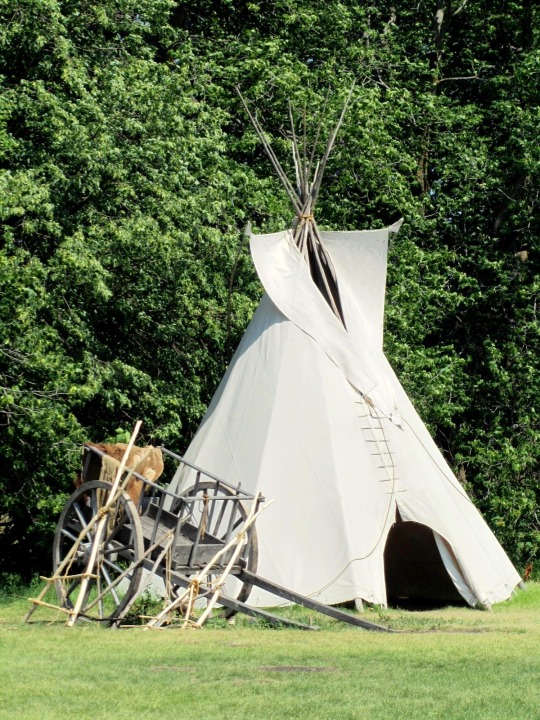



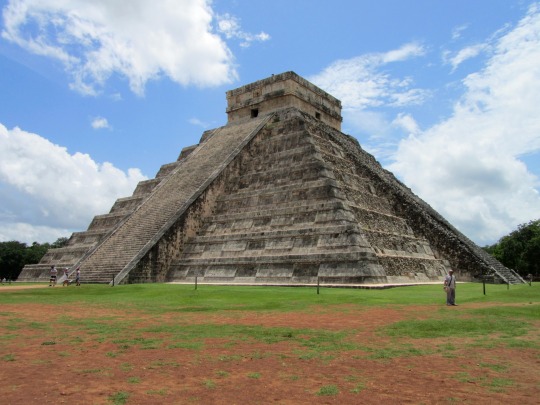

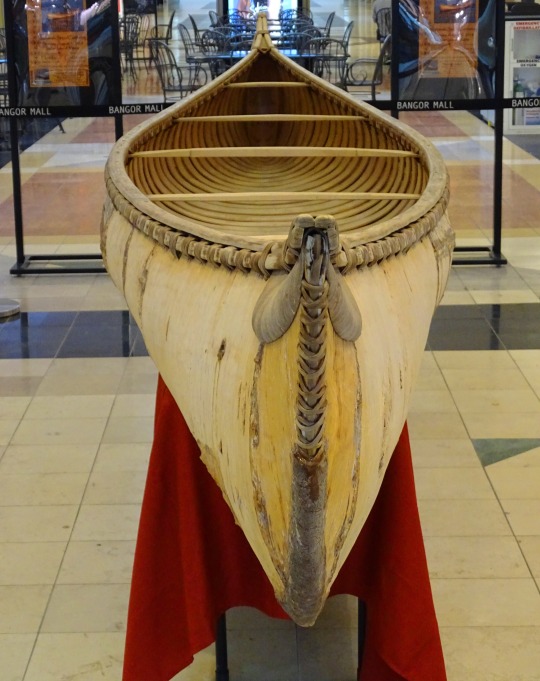

International Day of the World’s Indigenous People
There are an estimated 370 million indigenous people in the world, living across 90 countries. They make up less than 5 per cent of the world’s population, but account for 15 per cent of the poorest. They speak an overwhelming majority of the world’s estimated 7,000 languages and represent 5,000 different cultures.
Indigenous peoples are inheritors and practitioners of unique cultures and ways of relating to people and the environment. They have retained social, cultural, economic and political characteristics that are distinct from those of the dominant societies in which they live. Despite their cultural differences, indigenous peoples from around the world share common problems related to the protection of their rights as distinct peoples.
Indigenous peoples have sought recognition of their identities, their way of life and their right to traditional lands, territories and natural resources for years, yet throughout history their rights have always been violated. Indigenous peoples today, are arguably among the most disadvantaged and vulnerable groups of people in the world. The international community now recognizes that special measures are required to protect their rights and maintain their distinct cultures and way of life.
In order to raise awareness of the needs of these population groups, every 9 August commemorates the International Day of the World’s Indigenous Peoples, chosen in recognition of the first meeting of the UN Working Group on Indigenous Populations held in Geneva in 1982.
Source
#International Day of the World’s Indigenous People#9 August#Vancouver#InternationalDayOfTheWorldsIndigenousPeople#Canada#USA#travel#BC#Lower Fort Garry National Historic Site of Canada#Navajo#Mexico#Chichén Itzá#Montezuma Castle National Monument#original photography#Anishinaabe Scout by Hamilton MacCarthy#Ottawa#Bangor#Wabanki Canoe#Jamestown S'Klallam Tribe#Founding Fathers by Dale Faulstich
41 notes
·
View notes
Photo










National Day of Mourning
United States history dictates the vast amounts of immigration and colonization that exceeded European Imperialism. However, Native Americans who have suffered at the loss of their homelands recognize this mourning.
So, since 1970, participants have created an annual protest called the Day of Mourning to honor Native ancestors and their struggles to survive today. While the holiday coincides with Thanksgiving, the goal of this day is to educate people about Native American history.
History of Day of Mourning
While the story of Thanksgiving tells about a mutual benefit between the Pilgrims and Native Americans, this holiday tells a different side of history. The United American Indians of New England (UAINE) created this holiday to publicize the democide and misrepresentation of Native Americans.
The UANIE is a Native-led, self-supporting organization advocating for the recognition of struggles of Native Americans and political prisoners.
The day was founded based off of an experience one Native had. According to their website, Wamsutta, an Aquinnah Wampanoag man, had been asked to speak at a fancy Commonwealth of Massachusetts banquet celebrating the 350th anniversary of the landing of the Pilgrims and asked for a copy of the speech.
Within days Wamsutta was told by a representative of the Department of Commerce and Development that he would not be allowed to give the speech. Since then, UANIE asks participants to partake in the Day of Mourning to understand the racism and oppression they faced, as well as find a spiritual remembrance of those throughout history.
Their main location for their activities takes place in Cole’s Hill, Plymouth, Massachusetts. They invite speakers and march through the Plymouth district in hopes of understanding the truth about history and the misrepresentation of it throughout generations.
How to celebrate Day of Mourning
The UANIE starts with a day of fasting, from sundown to the afternoon of that day to mourn. Then they have political speakers attend and bring food so people can break their fast. Then they march throughout the district to protest.
While it takes place in New England, its message is aimed at America, and anyone all over can participate. Since it takes place on Thanksgiving, while your family gathers together to create feasts, you can take the time to fast beforehand and research Native American history.
While it is centered around Native Americans, people of all races and backgrounds can participate in a Day of Mourning and mourn with them.
Source
#Un monument pour Mary Ann by Jean-Robert Drouillard#Ottawa#Québec#Anishinaabe Scout by Hamilton MacCarthy#National Day of Mourning#USA#NationalDayOfMourning#fourth Thursday in November#26 November 2020#original photography#native american#First Nations#Wabanki Canoe#Montezuma Castle National Monument#Navajo#Diné#Holbrook#Founding Fathers by Dale Faulstich#Jamestown S'Klallam Tribe#Vancouver#Klahowya Village#The Gather-Ring by Manuel Báez and Charlynne Lafontaine
209 notes
·
View notes
Photo










Indigenous Peoples’ Day
Indigenous Peoples’ Day celebrates the culture, traditions, history, and contributions of Native Americans, and acknowledges that they were the first inhabitants of the Americas. Taking place on the same day as Columbus Day—the second Monday of October—the holiday also recognizes Columbus’s atrocities and enslavement of Native peoples. A day to rethink history, Indigenous Peoples’ Day exposes the irony of the belief that Columbus is the “discoverer” of the Americas, when people were there before him, and it acknowledges that the colonial takeover of the Americas began with him, which led to millions of deaths and the forced assimilation of Native peoples. Indigenous Peoples’ Day started as an alternative holiday or counter-celebration by those opposed to Columbus, who believe that he represents the violent colonization of the Western Hemisphere.
Indigenous Peoples’ Day is celebrated as an official holiday in many states, cities, towns, and universities. Events such as concerts, lectures, prayer vigils, powwows, rallies, and symposiums are held. Protests of Christopher Columbus sometimes take place. There is often a focus on Native American history in schools on the day. There is also an aim to focus on Native Americans in the present, and not to just see them as part of the past.
The roots of the day go back to 1977, when the International Conference on Discrimination Against Indigenous Populations in the Americas, sponsored by the United Nations, was held in Geneva, Switzerland. There, discussions arose about replacing Columbus Day with Indigenous Peoples’ Day in the United States. In 1989, South Dakota became the first state to honor Native Americans on Christopher Columbus Day, when they instituted Native Americans’ Day on the date. Berkeley, California, became one of the first cities to adopt Indigenous Peoples’ Day, when they started it in 1992, on the 500th anniversary of Columbus’s arrival in the Americas. Various states, cities, and universities have followed Berkeley, and canceled or replaced Columbus Day since.
How to Observe
Observe the day by participating in events related to it taking place in your community, such as concerts, lectures, prayer vigils, powwows, rallies, or symposiums. If your state or city doesn’t officially observe Indigenous Peoples’ Day, you could write to your state and local representatives asking them to consider making such a day official. Another way to mark the day could be to visit a museum dedicated to Native Americans, such as the National Museum of the American Indian (located in both Washington, D.C. and New York City), the Mitchell Museum of the American Indian, or the Museum of Indian Arts and Culture. Other ways to observe the day could include donating to a Native American organization or reading a book on Native Americans or Native American history, such as A Short Account of the Destruction of the Indies, Bury My Heart at Wounded Knee, or An Indigenous Peoples’ History of the United States. A popular book for younger people that explores Christopher Columbus and Native Americans is Rethinking Columbus: The Next 500 Years. You could also watch Bury My Heart at Wounded Knee or another film that focuses on Native Americans.
Source
#Montreal First People Festival#Indigenous Peoples' Day#Canada#Bangor#Maine#NativeAmericanDay#IndigenousPeoplesDay#12 October 2020#second Monday in October#Vancouver#Stanley Park#Washington#USA#Klahowya Village#totempole#Thunderbird House Post#summer 2012#Lower Fort Garry National Historic Site#Jamestown S'Klallam Tribe#Founding Fathers by Dale Faulstich#Wabanki Canoe#Montezuma Castle National Monument#Navajo#food#Anishinaabe Scout by Hamilton MacCarthy#original photography#First Nations
5 notes
·
View notes
Photo










National Native American Heritage Day
The day after Thanksgiving has been designated National Native American Heritage Day. It is a day to celebrate and recognize the contributions, culture, tradition and heritage of Native American societies.
“American Indians and Alaska Natives enrich every aspect of our country. As the first to live on this land, Native Americans and their traditions and values inspired — and continue to inspire — the ideals of self-governance and determination that are the framework of our Nation. This month, we recognize the contributions made by Native Americans since long before our founding, and we resolve to continue the work of strengthening government-to-government ties with tribal nations and expanding possibility for all.
Native Americans have helped make America what it is today. As we reflect on our history, we must acknowledge the unfortunate chapters of violence, discrimination, and deprivation that went on for far too long, as well as the effects of injustices that continue to be felt. While we cannot undo the pain and tragedy of the past, we can set out together to forge a brighter future of progress and hope across Indian Country and the entire American landscape.
Since I took office, I have worked with tribal leaders to write a new chapter in our nation-to-nation relationship. Ensuring young people have every opportunity to succeed is a critical aspect of our work together, and this year my Administration hosted the inaugural White House Tribal Youth Gathering following the launch of Generation Indigenous — an initiative aimed at improving the lives of Native youth and empowering the next generation of Native leaders. We will also host the seventh White House Tribal Nations Conference later this year, bringing together leaders of 567 tribes to explore opportunities for progress, with a particular focus on young people. As part of our agenda for providing Native youth the chance to realize their fullest potential, I have engaged tribal communities in a range of critical areas, and we have worked together to boost high school graduation rates and afford young people more chances to pursue higher education, employment, and professional development opportunities. We’re also working to expand access to health and counseling services essential to ensuring youth feel safe and heard.
My Administration has continued to partner with tribes to address vital gaps in resources for Indian Country, including equipping communities with broadband, rebuilding infrastructure, spurring economic growth, and increasing renewable energy. To confront the peril of a changing climate, we are also working with tribal leaders across America to develop effective approaches to protecting our communities from this grave threat. And because we know that fostering pride in the languages, traditions, and practices that make up the extraordinary richness of Native American culture is central to our shared progress, my Administration remains committed to ensuring every community feels connected to the extraordinary legacies they are a part of.
This month, let us reaffirm our responsibility to ensure each generation is defined by a greater sense of opportunity than the last, and let us pledge to maintain our strong relationship with tribal nations across America. By keeping this commitment, and by endeavoring to shape a future in which every citizen has the chance to build a life worthy of their hopes and dreams, we can ensure that ours is a country that is true to our spirit and to our enduring promise as a land where all things are possible for all people.
NOW, THEREFORE, I, BARACK OBAMA, President of the United States of America, by virtue of the authority vested in me by the Constitution and the laws of the United States, do hereby proclaim November 2015 as National Native American Heritage Month. I call upon all Americans to commemorate this month with appropriate programs and activities, and to celebrate November 27, 2015, as Native American Heritage Day.IN WITNESS WHEREOF, I have hereunto set my hand this thirtieth day of October, in the year of our Lord two thousand fifteen, and of the Independence of the United States of America the two hundred and fortieth.” BARACK OBAMA
HOW TO OBSERVE
To celebrate Native American Heritage Day try any of the following: Read a story about or by a Native American. Visit one of many Native American museums, heritage centers or historic sights. Try a delicious Native American recipe. Watch a movie or documentary about or by a Native American. Participate in or watch a game of Lacrosse. Attend one of many seminars, performances or events honoring Native American culture across the country. Pemmican Algonquin Wild Nut Soup Posole with Red Chile.
HISTORY
Riding horseback from state to state in 1914, Red Fox James, a Blackfoot Indian, sought endorsement from 24 states in support of a national day recognizing and honoring Native Americans. He presented these endorsements to the White House the following year. While no national day was proclaimed, the state of New York declared the second Saturday in May as American Indian Day.
In 1986, the 99th Congress passed a joint resolution authorizing the President to proclaim the week of November 23-30, 1986 as American Indian Week. President Ronald Reagan declared the first American Indian week that year and each year following of his presidency. President George H.W. Bush continued the proclamations until 1990 when he approved a joint resolution to declare November as National American Indian Heritage Month. This tradition has continued annually. In 2008 the Native American Heritage Day Act was enacted by Congress and signed by President Barack Obama.
Source
#Jamestown S'Klallam Tribe#National Native American Heritage Day#USA#travel#day after Thanksgiving#29 November 2019#public art#vacation#Canada#Founding Fathers by Dale Faulstich#Ottawa#Toronto#Fort York National Historic Site#Anishinaabe Scout by Hamilton MacCarthy#Anishinaabe Warrior#Klahowya Village#Vancouver#Navajo#Holbrook#Diné#food#Albuquerque#Wabanki Canoe#Cherokee#original photography
3 notes
·
View notes
Photo










Native American Day
Native Americans have been a part of the American tradition even before the United States began. However, due to hundreds of years of persecution, much isn’t left of the neighboring tribes and many have integrated into modern society.
Those still in touch with their culture, however, will remember these events and want people to remember it. Native American Day is a holiday aimed at changing the way people view Native Americans.
History of Native American Day
Native Americans were around long before the Europeans decided to colonize and take over the wild forests and plains of the United States. But while many people consider the Native Americans to be a long-forgotten tradition, Native Americans have a steep root in culture and history that has been cultivating for thousands of years.
From the Inuit tribes of Alaska, the Seneca nations of the Northeast, the Cherokees of the South, to the Navajo of the Southwest, Native Americans exist everywhere with different cultural traditions and hundreds of dialects in their languages. By the time Europeans traveled to America during the 15ht century, over 50 million Native Americans lived throughout the continent.
Native American Day is about appreciating the long history of culture and traditions that Native Americans have preserved throughout time. The holiday is celebrated in states such as South Dakota and California. Native American Day was originally called “American Indian Day” when Govoner Ronald Reagan signed a resolution calling for a change in 1968.
Native American Day was officially declared a state holiday in 1998, and South Dakota proclaimed the year 1990 as a year of reconciliation between Native Americans and Caucasian populations, eventually changing Colombus Day to Native American Day. People celebrate this holiday by learning about the different kinds of tribes and cultures that persisted among all odds during what many Natives consider as their genocide.
How to celebrate Native American Day
Honor Native American cultures by learning about the tribes of your local area. Be respectful of their traditions and take the time to learn of their history. If you stand against the holiday Colombus Day, petition your congressman to change the celebration of that holiday for your state.
Help educate people about the cultures and traditions of the Native Americans by sharing this information with others. Advocate and support the Native Americans in their expression of their culture and help protect their rights by standing with them as an ally.
Source
#Native American Day#NativeAmericanDay#Washington#USA#summer 2017#travel#vacation#original photography#Jamestown S'Klallam Tribe#Founding Fathers by Dale Faulstich#Montezuma Castle National Monument#Arizona#2014#Sinagua people#Diné#Canada#2012#Aboriginal Encampment#Lower Fort Garry National Historic Site#Manitoba#Vancouver#Klahowya Village#food#Ottawa#Anishinaabe Scout by Hamilton MacCarthy#14 October 2019#second Monday in October
1 note
·
View note
Photo
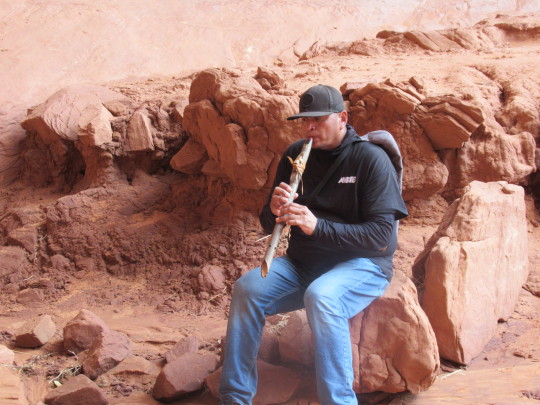
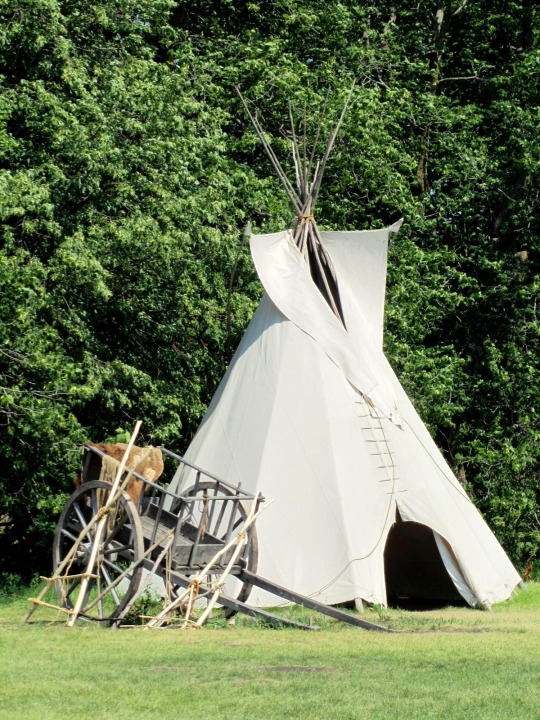



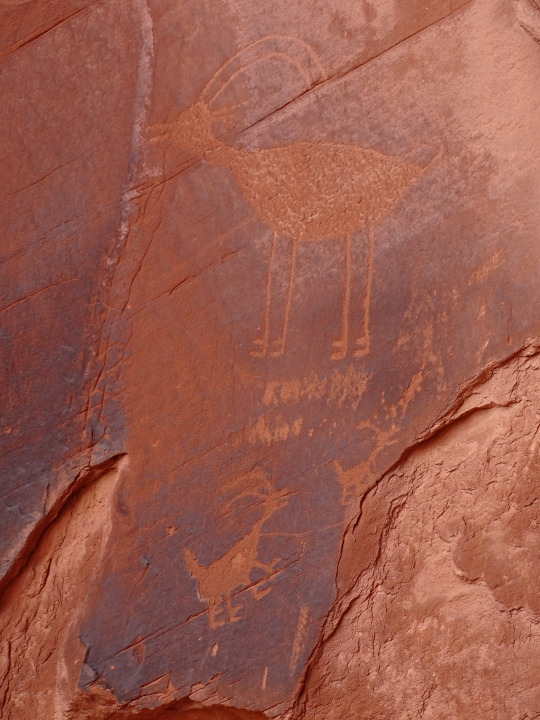



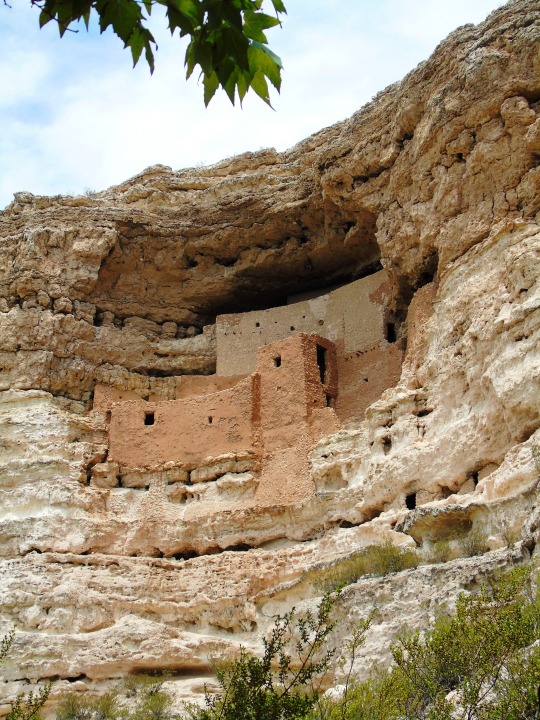
Native American Day
Learn about the rich cultures of Native American tribes in your area. Support modern tribes by educating others, buying goods, and participating in events.
Native Americans have been a part of the American tradition even before the United States began. However, due to hundreds of years of persecution, much isn’t left of the neighboring tribes and many have integrated into modern society.
Those still in touch with their culture, however, will remember these events and want people to remember it. Native American Day is a holiday aimed at changing the way people view Native Americans.
Learn about Native American Day
As the name indicates, Native American Day pays honor to Native Americans. They are thought to be the first Americans to populate and live in the United States. North Americans had populated the entire North American continent before the first explorers and settlers from Europe came. This was all of the way from the Pacific to the Atlantic, as well as from the northern reaches of Canada to the Gulf of Mexico. It goes without saying that Native Americans play a huge part in the history of the United States, and so it is only right that there is a date to honor them.
This is a day that is celebrated across the United States. It can be celebrated on different dates depending on where in the United States you are based, so it is worth keeping this in mind. For example, in Wisconsin and South Dakota, it falls on the second Monday in October.
However, in Nevada and California, the date is celebrated on the fourth Friday in September. No matter where it is celebrated, though, it is all about paying honor to Native American communities and the cultural contributions they have made to the history of each state and the country as a whole.
The observance of Native American Day focuses on a celebration of the history, heritage, and culture of tribes across the United State. Each diverse nation has its own beliefs, rituals, and traditions. This day is about celebrating the enriching heritage, contributions, and knowledge of Native Americans.
It also serves as a great reminder of their enduring legacy of fortitude, energy, and strength. I think most people would agree that we do not always take enough time to sit back and reflect on what our ancestors have contributed to the world that we live in.
History of Native American Day
Native Americans were around long before the Europeans decided to colonize and take over the wild forests and plains of the United States. But while many people consider the Native Americans to be a long-forgotten tradition, Native Americans have a steep root in culture and history that has been cultivating for thousands of years.
From the Inuit tribes of Alaska, the Seneca nations of the Northeast, the Cherokees of the South, to the Navajo of the Southwest, Native Americans exist everywhere with different cultural traditions and hundreds of dialects in their languages. By the time Europeans traveled to America during the 15ht century, over 50 million Native Americans lived throughout the continent.
Native American Day is about appreciating the long history of culture and traditions that Native Americans have preserved throughout time. The holiday is celebrated in states such as South Dakota and California. Native American Day was originally called “American Indian Day” when Govoner Ronald Reagan signed a resolution calling for a change in 1968.
Native American Day was officially declared a state holiday in 1998, and South Dakota proclaimed the year 1990 as a year of reconciliation between Native Americans and Caucasian populations, eventually changing Colombus Day to Native American Day. People celebrate this holiday by learning about the different kinds of tribes and cultures that persisted among all odds during what many Natives consider as their genocide.
How to celebrate Native American Day
Honor Native American cultures by learning about the tribes of your local area. Be respectful of their traditions and take the time to learn of their history. If you stand against the holiday Colombus Day, petition your congressman to change the celebration of that holiday for your state.
Help educate people about the cultures and traditions of the Native Americans by sharing this information with others. Advocate and support the Native Americans in their expression of their culture and help protect their rights by standing with them as an ally.
We would recommend taking a look at the events that are happening in your local area to see whether there is anything that you can join in with. As mentioned, there are differences in terms of events and celebrations depending on where in the United States you are based. For example, let’s start by taking a look at South Dakota. In South Dakota, the day is celebrated by using educational resources to focus on the background, culture, and traditions of Native Americans. It is about sharing many aspects of native culture, whether you are a native or not.
There are also a lot of celebrations that occur throughout different parts of California. In Berkeley, for instance, there are some churches, community groups, and organizations that will support Native American Day by carrying out activities that are focused on raising awareness about the traditions, culture, and history of the indigenous people in the U.S. Some of the cultural activities include the likes of pow wows and markets. Pow wows, for those who are unaware, are gatherings of indigenous people from North America. In modern times, these get-togethers involve celebrating Native American culture, socializing, singing, and dancing.
Source
#Mesa Verde National Park#Colorado#Monument Valley Navajo Tribal Park#petroglyphs#Diné#Native American flute#Klahowya Village#USA#Canada#original photography#traditional Wabanki Canoe#Founding Fathers by Dale Faulstich#Jamestown S'Klallam Tribe#Montezuma Castle National Monument#Native American Day#fourth Friday in September#23 September 2022#NativeAmericanDay#First Nations
1 note
·
View note
Photo










Native American Day is observed annually on the second Monday in October. While it is not celebrated in all 50 states, it is recognized in both California and South Dakota while gaining popularity in the rest of the nation.
Native American Day is a day to celebrate the cultures and contributions made to our country by the various Native American tribes.
In other parts of the country, Indigenous Peoples’ Day celebrations occur on this day. Events such as traditional dances, art displays and ceremonies have begun to replace Columbus Day practices.
HISTORY
The South Dakota legislature unanimously passed legislation proposed by Governor George S. Mickelson in 1989 to proclaim 1990 as the “Year of Reconciliation” between Native Americans and whites and to change Columbus Day to Native American Day.
Source
#Klallam Language#Founding Fathers by Dale Faulstich#Aboriginal Encampment#usa#canada#Lower Fort Garry#public art#Anishinaabe Scout by Hamilton MacCarthy#Native American Day#second Monday in October#8 October 2018#first nations#travel#original photography#summer vacation#Montezuma Castle National Monument#NativeAmericanDay#navajo#Damariscotta Shell Midden Historic District#food#jingle dress dancer
1 note
·
View note
Photo










Indigenous Peoples’ Day
Indigenous Peoples’ Day celebrates the culture, traditions, history, and contributions of Native Americans, and acknowledges that they were the first inhabitants of the Americas. Taking place on the same day as Columbus Day—the second Monday of October—the holiday also recognizes Columbus’s atrocities and enslavement of Native peoples. A day to rethink history, Indigenous Peoples’ Day exposes the irony of the belief that Columbus is the “discoverer” of the Americas, when people were there before him, and it acknowledges that the colonial takeover of the Americas began with him, which led to millions of deaths and the forced assimilation of Native peoples. Indigenous Peoples’ Day started as an alternative holiday or counter-celebration by those opposed to Columbus, who believe that he represents the violent colonization of the Western Hemisphere.
Indigenous Peoples’ Day is celebrated as an official holiday in many states, cities, towns, and universities. Events such as concerts, lectures, prayer vigils, powwows, rallies, and symposiums are held. Protests of Christopher Columbus sometimes take place. There is often a focus on Native American history in schools on the day. There is also an aim to focus on Native Americans in the present, and not to just see them as part of the past.
The roots of the day go back to 1977, when the International Conference on Discrimination Against Indigenous Populations in the Americas, sponsored by the United Nations, was held in Geneva, Switzerland. There, discussions arose about replacing Columbus Day with Indigenous Peoples’ Day in the United States. In 1989, South Dakota became the first state to honor Native Americans on Christopher Columbus Day, when they instituted Native Americans’ Day on the date. Berkeley, California, became one of the first cities to adopt Indigenous Peoples’ Day, when they started it in 1992, on the 500th anniversary of Columbus’s arrival in the Americas. Various states, cities, and universities have followed Berkeley, and canceled or replaced Columbus Day since.
How to Observe
Observe the day by participating in events related to it taking place in your community, such as concerts, lectures, prayer vigils, powwows, rallies, or symposiums. If your state or city doesn’t officially observe Indigenous Peoples’ Day, you could write to your state and local representatives asking them to consider making such a day official. Another way to mark the day could be to visit a museum dedicated to Native Americans, such as the National Museum of the American Indian (located in both Washington, D.C. and New York City), the Mitchell Museum of the American Indian, or the Museum of Indian Arts and Culture. Other ways to observe the day could include donating to a Native American organization or reading a book on Native Americans or Native American history, such as A Short Account of the Destruction of the Indies, Bury My Heart at Wounded Knee, or An Indigenous Peoples’ History of the United States. A popular book for younger people that explores Christopher Columbus and Native Americans is Rethinking Columbus: The Next 500 Years. You could also watch Bury My Heart at Wounded Knee or another film that focuses on Native Americans.
Source
#Founding Fathers by Dale Faulstich#Jamestown S'Klallam Tribe#Montréal#USA#Montreal First Peoples Festival#11 October 2021#Canada#travel#Indigenous Peoples’ Day#second Monday in October#IndigenousPeoplesDay#Lower Fort Garry National Historic Site of Canada#Klahowya Village#Vancouver#Washington#Stanley Park#Thunderbird House Post#Native American history#Montezuma Castle National Monument#Wabanki Canoe#The Gather-Ring by Manuel Báez and Charlynne Lafontaine#public art#original photography
0 notes
Photo










Public Art (No. 80)
Founding Fathers by Dale Faulstich, Jamestown S'Klallam Tribe (four pics)
Brass Plaque, Jamestown S'Klallam Tribe
S'Kallam Legends by Dale Faulstich, Jamestown S'Klallam Tribe (four pics)
Welcome, Jamestown S'Klallam Tribe
#public art#sculpture#wood carving#Founding Fathers by Dale Faulstich#native american#detail#close up#olympic peninsula#S'Kallam Legends#Brass Plaque#Jamestown S'Klallam Tribe#sequim#west coast#native american languages#washington#usa#summer 2017#travel#photography#photoset#Jamestown S'Klallam Tribe of Washington#S'Klallam language#Clallam#Klallam
8 notes
·
View notes
Photo










International Day of the World’s Indigenous People
There are an estimated 370 million indigenous people in the world, living across 90 countries. They make up less than 5 per cent of the world’s population, but account for 15 per cent of the poorest. They speak an overwhelming majority of the world’s estimated 7,000 languages and represent 5,000 different cultures.
Indigenous peoples are inheritors and practitioners of unique cultures and ways of relating to people and the environment. They have retained social, cultural, economic and political characteristics that are distinct from those of the dominant societies in which they live. Despite their cultural differences, indigenous peoples from around the world share common problems related to the protection of their rights as distinct peoples.
Indigenous peoples have sought recognition of their identities, their way of life and their right to traditional lands, territories and natural resources for years, yet throughout history their rights have always been violated. Indigenous peoples today, are arguably among the most disadvantaged and vulnerable groups of people in the world. The international community now recognizes that special measures are required to protect their rights and maintain their distinct cultures and way of life.
In order to raise awareness of the needs of these population groups, every 9 August commemorates the International Day of the World’s Indigenous Peoples, chosen in recognition of the first meeting of the UN Working Group on Indigenous Populations held in Geneva in 1982.
Source
#Wabanki Canoe#International Day of the World's Indigenous People#9 August#InternationalDayOfTheWorldsIndigenousPeople#Bangor#USA#travel#original photography#Vancouver#Canada#First Nations#aboriginal people#Native Americans#Navajo#Montezuma Castle National Monument#Chichén Itzá#architecture#Maya#Founding Fathers by Dale Faulstich#Sequim#Anishinaabe Scout by Hamilton MacCarthy#food#Lower Fort Garry National Historic Site
0 notes
Photo










Native American Day is observed annually on the second Monday in October. While it is not celebrated in all 50 states, it is recognized in both California and South Dakota while gaining popularity in the rest of the nation.
Native American Day is a day to celebrate the cultures and contributions made to our country by the various Native American tribes.
In other parts of the country, Indigenous Peoples’ Day celebrations occur on this day. Events such as traditional dances, art displays and ceremonies have begun to replace Columbus Day practices.
HISTORY
The South Dakota legislature unanimously passed legislation proposed by Governor George S. Mickelson in 1989 to proclaim 1990 as the “Year of Reconciliation” between Native Americans and whites and to change Columbus Day to Native American Day.
Source
#NativeAmericanDay#Native American Day.#second Monday in October#9 October 2017#national day#Montezuma Castle National Monument#roundhouse#native american mural#navajo#dance#Navajo Code Talker#public art#sculpture#teepee#Lower Fort Garry#first nations#usa#canada#Founding Fathers by Dale Faulstich#totem pole#food#Pueblo Feast#travel#photography#photoset#jingle dress dancer
18 notes
·
View notes
Photo










Jamestown S'Klallam Tribe, WA (No. 2)
Klallam (also Clallam, although the spelling with "K" is preferred in all four modern Klallam communities) refers to four related indigenous Native American/First Nations communities from the Pacific Northwest of North America. The Klallam culture is classified ethnographically and linguistically in the Coast Salish subgroup. Two Klallam bands live on the Olympic Peninsula and one on the Kitsap Peninsula in Washington state, and one is based at Becher Bay on southern Vancouver Island in British Columbia.
The indigenous Klallam language name for the tribe is nəxʷsƛ̕ay̕əm (meaning "strong people"). The word "Klallam" comes from the North Straits Salish language name for the Klallam people, [xʷstɬ̕æləm]. This has had a wide variety of English spellings including "Chalam", "Clalam", "Clallem", "Clallum", "Khalam", "Klalam", "Noodsdalum", "Nooselalum", "Noostlalum", "Tlalum", "Tlalam", "Wooselalim", "S'Klallam", "Ns'Klallam", "Klallam" and "Clallam".[1]"Clallam" was used by the Washington Territory legislature in 1854 when it created Clallam County. The following year "S'klallam" was used in the Point No Point Treaty. In the following decades the simpler "Klallam" or "Clallam" predominated in the media and research literature. In 1981 "S'Klallam" was used when the United States Department of the Interior officially recognized the Lower Elwha, Jamestown, and Port Gamble (or Little Boston) tribes.
In local media today "Clallam" is used to refer to the people of Clallam County, Washington—both native and non-native. It is also used in the names of a number of non-native commercial enterprises. The spellings with 'K' are used to refer to the native peoples. The Lower Elwha tribe has adopted "Klallam" as its official spelling. The Port Gamble and Jamestown tribes have adopted "S'Klallam" as their official spelling.
Source: Wikipedia
#S'Kallam Legends by Dale Faulstich#Klallam language#Founding Fathers#native american#sequim#olympic peninsula#public art#architecture#wood carving#Sequim Bay#pacific ocean#landscape#countryside#travel#summer 2017#vacation#tourism#original photography#road trip
111 notes
·
View notes
Photo










The day after Thanksgiving has been designated National Native American Heritage Day. It is a day to celebrate and recognize the contributions, culture, tradition and heritage of Native American societies.
“American Indians and Alaska Natives enrich every aspect of our country. As the first to live on this land, Native Americans and their traditions and values inspired — and continue to inspire — the ideals of self-governance and determination that are the framework of our Nation. This month, we recognize the contributions made by Native Americans since long before our founding, and we resolve to continue the work of strengthening government-to-government ties with tribal nations and expanding possibility for all.Native Americans have helped make America what it is today. As we reflect on our history, we must acknowledge the unfortunate chapters of violence, discrimination, and deprivation that went on for far too long, as well as the effects of injustices that continue to be felt. While we cannot undo the pain and tragedy of the past, we can set out together to forge a brighter future of progress and hope across Indian Country and the entire American landscape.Since I took office, I have worked with tribal leaders to write a new chapter in our nation-to-nation relationship. Ensuring young people have every opportunity to succeed is a critical aspect of our work together, and this year my Administration hosted the inaugural White House Tribal Youth Gathering following the launch of Generation Indigenous — an initiative aimed at improving the lives of Native youth and empowering the next generation of Native leaders. We will also host the seventh White House Tribal Nations Conference later this year, bringing together leaders of 567 tribes to explore opportunities for progress, with a particular focus on young people. As part of our agenda for providing Native youth the chance to realize their fullest potential, I have engaged tribal communities in a range of critical areas, and we have worked together to boost high school graduation rates and afford young people more chances to pursue higher education, employment, and professional development opportunities. We’re also working to expand access to health and counseling services essential to ensuring youth feel safe and heard.My Administration has continued to partner with tribes to address vital gaps in resources for Indian Country, including equipping communities with broadband, rebuilding infrastructure, spurring economic growth, and increasing renewable energy. To confront the peril of a changing climate, we are also working with tribal leaders across America to develop effective approaches to protecting our communities from this grave threat. And because we know that fostering pride in the languages, traditions, and practices that make up the extraordinary richness of Native American culture is central to our shared progress, my Administration remains committed to ensuring every community feels connected to the extraordinary legacies they are a part of.This month, let us reaffirm our responsibility to ensure each generation is defined by a greater sense of opportunity than the last, and let us pledge to maintain our strong relationship with tribal nations across America. By keeping this commitment, and by endeavoring to shape a future in which every citizen has the chance to build a life worthy of their hopes and dreams, we can ensure that ours is a country that is true to our spirit and to our enduring promise as a land where all things are possible for all people.NOW, THEREFORE, I, BARACK OBAMA, President of the United States of America, by virtue of the authority vested in me by the Constitution and the laws of the United States, do hereby proclaim November 2015 as National Native American Heritage Month. I call upon all Americans to commemorate this month with appropriate programs and activities, and to celebrate November 27, 2015, as Native American Heritage Day.IN WITNESS WHEREOF, I have hereunto set my hand this thirtieth day of October, in the year of our Lord two thousand fifteen, and of the Independence of the United States of America the two hundred and fortieth.” BARACK OBAMA
HOW TO OBSERVE
To celebrate Native American Heritage Day try any of the following: Read a story about or by a Native American. Visit one of many Native American museums, heritage centers or historic sights. Try a delicious Native American recipe. Watch a movie or documentary about or by a Native American. Participate in or watch a game of Lacrosse. Attend one of many seminars, performances or events honoring Native American culture across the country. Pemmican Algonquin Wild Nut Soup Posole with Red Chile.
HISTORY
Riding horseback from state to state in 1914, Red Fox James, a Blackfoot Indian, sought endorsement from 24 states in support of a national day recognizing and honoring Native Americans. He presented these endorsements to the White House the following year. While no national day was proclaimed, the state of New York declared the second Saturday in May as American Indian Day.In 1986, the 99th Congress passed a joint resolution authorizing the President to proclaim the week of November 23-30, 1986 as American Indian Week. President Ronald Reagan declared the first American Indian week that year and each year following of his presidency. President George H.W. Bush continued the proclamations until 1990 when he approved a joint resolution to declare November as National American Indian Heritage Month. This tradition has continued annually. In 2008 the Native American Heritage Day Act was enacted by Congress and signed by President Barack Obama.
Source
#Wabanki Canoe#Birch Bark Canoe#day after Thanksgiving#National Native American Heritage Day#23 November 2018#public art#usa#canada#summer vacation#original photography#Founding Fathers by Dale Faulstich#Jamestown S'Klallam Tribe#Klallam Language#Montezuma Castle National Monument#food#Hopi House#Cherokee syllabary
0 notes
Photo






United States history dictates the vast amounts of immigration and colonization that exceeded European Imperialism. However, Native Americans who have suffered at the loss of their homelands recognize this mourning. So, since 1970, participants have created an annual protest called the Day of Mourning to honor Native ancestors and their struggles to survive today. While the holiday coincides with Thanksgiving, the goal of this day is to educate people about Native American history.
History of Day of Mourning
While the story of Thanksgiving tells about a mutual benefit between the Pilgrims and Native Americans, this holiday tells a different side of history. The United American Indians of New England (UAINE) created this holiday to publicize the democide and misrepresentation of Native Americans. The UANIE is a Native-led, self-supporting organization advocating for the recognition of struggles of Native Americans and political prisoners.
The day was founded based off of an experience one Native had. According to their website, Wamsutta, an Aquinnah Wampanoag man, had been asked to speak at a fancy Commonwealth of Massachusetts banquet celebrating the 350th anniversary of the landing of the Pilgrims and asked for a copy of the speech. Within days Wamsutta was told by a representative of the Department of Commerce and Development that he would not be allowed to give the speech. Since then, UANIE asks participants to partake in the Day of Mourning to understand the racism and oppression they faced, as well as find a spiritual remembrance of those throughout history. Their main location for their activities takes place in Cole’s Hill, Plymouth, Massachusetts. They invite speakers and march through the Plymouth district in hopes of understanding the truth about history and the misrepresentation of it throughout generations.
How to Celebrate Day of Mourning
The UANIE starts with a day of fasting, from sundown to the afternoon of that day to mourn. Then they have political speakers attend and bring food so people can break their fast. Then they march throughout the district to protest. While it takes place in New England, its message is aimed at America, and anyone all over can participate. Since it takes place on Thanksgiving, while your family gathers together to create feasts, you can take the time to fast beforehand and research Native American history. While it is centered around Native Americans, people of all races and backgrounds can participate in a Day of Mourning and mourn with them.
Source
#Anishinaabe Scout by Hamilton MacCarthy#public art#sculpture#travel#Un monument pour Mary Ann by Jean-Robert Drouillard#Chief Massasoit by Cyrus E. Dallin#Day of Mourning#fourth Thursday in November#original photography#summer vacation#NationalDayOfMourning#22 November 2018#usa#canada#Founding Fathers by Dale Faulstich#quebec#vancouver#Holbrook#ottawa#sequim
0 notes